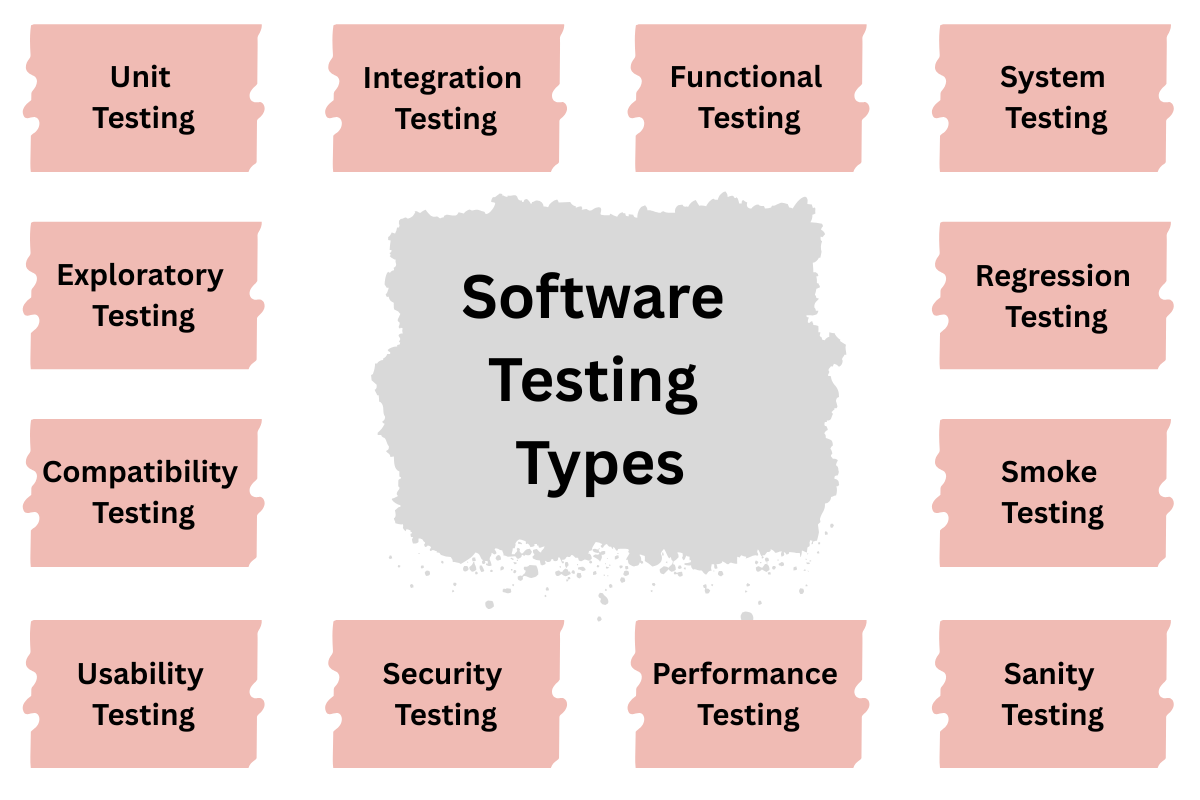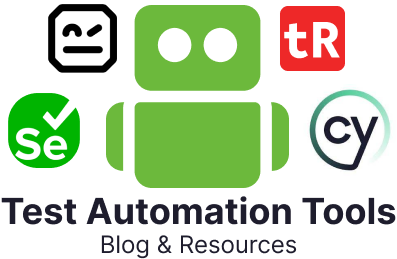
For a software development cycle, the software testing process is a critical stage. It ensures that the solution not only operates as designed but also satisfies user expectations and business demands. There are multiple types of software testing, each with unique goals, steps, benefits, and restrictions. This blog will dive deeper into the crucial and commonly utilized types of software testing, understanding their need, advantages, hurdles, subtypes, best scenarios for implementation, and also the newer and advanced testing strategies.
Understanding the Types of Software Testing
Conventionally, there are two major types of software testing:
- Functional testing: It focuses on validating the product’s operation as per the demands. It analyzes the system’s qualities by offering relevant input and validating the output.
- Non-functional testing: Non-functional testing evaluates aspects of the software that may not be related to specific behaviors or functions but are crucial for user experience and performance.
Once we have become aware of the types of testing, let us take a look at the subtypes of testing that come under the above two:
- Unit Testing
- Integration Testing
- Functional Testing
- System Testing
- Regression Testing
- Smoke Testing
- Sanity Testing
- Performance Testing
- Security Testing
- Usability Testing
- Compatibility Testing
- Exploratory Testing
Unit Testing
Unit testing is the method of validating singular components or functionalities of a product in isolation. The main goal is to make sure that each component of the code operates correctly. This method of testing is traditionally implemented by developers during the code stage and is frequently automated. This makes it a type of white-box testing as the tester knows the inner workings of the system under test.
Unit tests help detect bugs proactively, optimizing the code quality and decreasing the cost of rectifying issues in the later stages. A major advantage is the rapid execution speed, thus making them perfect for continuous integration pipelines. You’ll largely see the use of mocks and stubs in unit testing as these tests need to be lightweight and fast.
However, unit testing also has disadvantages. It does not validate how varying modules communicate, thus often overlooking defects connected to the system integration or user interface. You might also find many unit tests being redundant in the grand scheme of things and also difficult to maintain.
Integration Testing
Integration testing concentrates on validating the interaction between integrated components or modules. Once individual components have been validated in isolation, integration tests make sure that the data flows accurately and components interact as expected.
The main objective is to identify interface discrepancies and communication problems early in the development phase. While it introduces another layer of validation, the integration testing process can be complicated, especially when working with third-party services or asynchronous functions.
Integration testing’s subtypes include bottom-up, top-down, and hybrid (also called sandwich) testing. This type of testing is critical for API testing, microservices architectures, and large enterprise apps with numerous interdependent systems.
Functional Testing
It is a black-box testing strategy that verifies the product against the finalized functional demands or specifications. The objective is to make sure that the app behaves as designed and expected in real-life scenarios.
Testers verify different user flows such as login, registration, add to cart, transactions, etc and ensure accurate input/output and app behavior. Such testing is focused on users and helps provide an improved product experience. But it may often lag at identifying performance bottlenecks or security loopholes.
Functional subtypes include sanity, smoke and regression testing. They have been explained further down in the blog. This testing is commonly leveraged in GUI, acceptance testing and UAT verification.
System Testing
It is a high-level testing method where the complicated, integrated software is validated against the gathered client requirements. It behaves as the final verification phase right before the solution is delivered to end-users or the client.
System testing often covers both functional and non-functional features such as reliability, maintainability, and usability. One of its biggest benefits is the comprehensive strategy, but its expansive scope can also make this strategy time and labor-intensive.
System testing is often deployed in a staging setting that duplicates production and consists of end-to-end user workflows, rendering it critical for pre-release validation.
Regression Testing
Regression testing is pre-dominantly used to verify that the most recent changes to code have not impacted the previously working functionalities. This is one by re-deploying existing test cases for the validation process. This step is essential to maintain software quality across the time needed for the development phase to complete, especially in the DevOps and Agile environments.
A major advantage for ensuring stability and quality after feature enhancements and defect resolutions. A drawback is that deploying the biggest regression test cases can often be time-intensive and delay releases unless the process is automated.
This testing method is usually supported by automated testing tools and integrated with the CI/CD pipelines. It’s a non-negotiable step for constantly changing projects with regular updates.
Smoke Testing
Smoke testing is also called the build verification testing. It is the precursory validation to verify the basic feature of an app. The goal is to verify that the major functionalities operate and the build is stable for continued testing.
It’s quick to deploy and facilitates detecting critical defects faster. The drawback is its restricted scope, it only validates crucial paths and can overlook serious bugs.
Smoke testing is generally deployed post-build and before mature testing commences, designating it as a first line of defense against error-prone deployments.
Sanity Testing
Sanity testing is a subtype of regression testing concentrated on special features. It’s leveraged when there is neither resource nor time for a holistic test suite, traditionally after a defect resolution or minor code changes.
The goal is to authenticate that the fixes were successful and haven’t impacted unrelated segments. While cost-effective and rapid, sanity tests can overlook broader problems due to their constricted focus.
This practice is best used during tight release cycles where fast validation is required without expensive overhead.
Performance Testing
Performance testing validates the system’s performance under specific stress conditions, such as stability, scalability, and responsiveness. The intention is to detect performance hurdles before the product is delivered to end-users.
Yes, performance testing does ensure that the app provides a seamless user experience; however, the method is resource-intensive and needs customized tools and environments. Some common subtypes of performance testing include:
- Stress testing: Identifies the breaking point of the system.
- Scalability testing: Checks the system’s capability to scale up or down as required.
- Load testing: Gauges the system behavior under the expected stress or user load.
This testing method is best for apps that are sure to get high traffic, such as real-time systems and e-commerce platforms.
Security Testing
Security testing detects vulnerabilities and makes sure that the system secures data and maintains integrity. With increased incidences of cyber threats, this testing procedure is even more crucial in the current age.
The goal is to restrict unauthorized access, data breaches, and other security issues. But security testing demands intensive domain knowledge and often specialized tools, making it complicated and often expensive.
Penetration testing, risk assessment, and vulnerability scanning are all subtypes of security testing. It is necessary in healthcare, fintech, and just about any domain that handles sensitive user data.
Usability Testing
Usability testing concentrates on validates the user-friendliness of the product. It verifies how simplified and intuitive the app is from the POV of an end-user.
The main goal is to zero-down on usability hurdles before the app reaches a expanded audience. The testing does add value when validating user satisfaction, but it can very subjective and demands participation from real end-users.
Common situations consist of onboarding flows, mobile app navigation, and e-commerce checkout flows. Remote usability and A/B testing are both subtypes of usability testing.
Compatibility Testing
Compatibility testing validates that the product behaves as expected across multiple operating systems, devices, browsers, and network environments.
The main goal is to detect rendering problems, functionality discrepancies, and device-specific defects. While it boosts product accessibility, it needs extensive test coverage matrices and device labs.
Compatibility testing is specifically critical to mobile and web apps related to a diverse user base.
Exploratory Testing
Exploratory testing is a creative, informal method where testers explores the product without any defined test cases. The goal is to identify any unexpected behaviors and edge-case defects.
It is highly accurate in detecting UI/UX problems and logical inconsistencies, but falls short of documentation and repeatability, making it difficult to reproduce and track.
Exploratory testing is frequently deployed in early development stages, beta testing, or when time restrictions curtail detailed scripting.
Understanding the Advanced and Innovative Testing Strategies
Modern software requires modern testing techniques. The implementation of AI in testing and the adaptation of shift-left and shift-right testing are two critical trends that are transforming the QA industry.
Testing with AI and ML
AI and Machine Learning (ML) have drastically revolutionized software testing. It boosts accuracy and reduces manual efforts. The biggest advantage of AI-enabled tools is:
- Learning from past data to predict code segments that are bug-prone
- Self-healing tests that automatically update with code or flow changes.
- Build test cases automatically with the application and usage behavior data.
There are a number of AI-enabled testing tools that facilitate rapid and intelligent testing. Visual AI is instrumental in identifying UI anomalies. With all the above being said, it is important to acknowledge that even though AI helps accelerate quality assurance, human monitoring is critical for understanding complicated scenarios.
What is the buzz around shift-left and shift-right testing?
Testing is implemented earlier in the development phase, right at the design and code, which is referred to as the shift-left testing. It catches bugs earlier and reduces the frequency of rework. Testing that is extended into the post-deployment setting, often in a production environment, is called shift-right testing. It underscores real-life monitoring, resilience testing, and user feedback via methods that include A/B testing, real end-user monitoring, and chaos testing.
When efficiently combined, shift-left and shift-right testing help to offer improved and consistent user experiences, faster releases, and assured quality.
Conclusion
It is important to understand that software testing is a big industry with a multitude approaches, all of which are built to identify specific issues. QA and development teams can build efficient test strategies, allot resources in an efficient manner, and ensure improved software quality by being cognizant of the minute differences between each testing method.
Having the right knowledge to know which is the right amalgamation of testing methods to create a secure, high-performing, and dependable app is a skill that comes with experience. This expertise is critical regardless of whether the test is being conducted on an individual component or verifying an enterprise-scale product.
